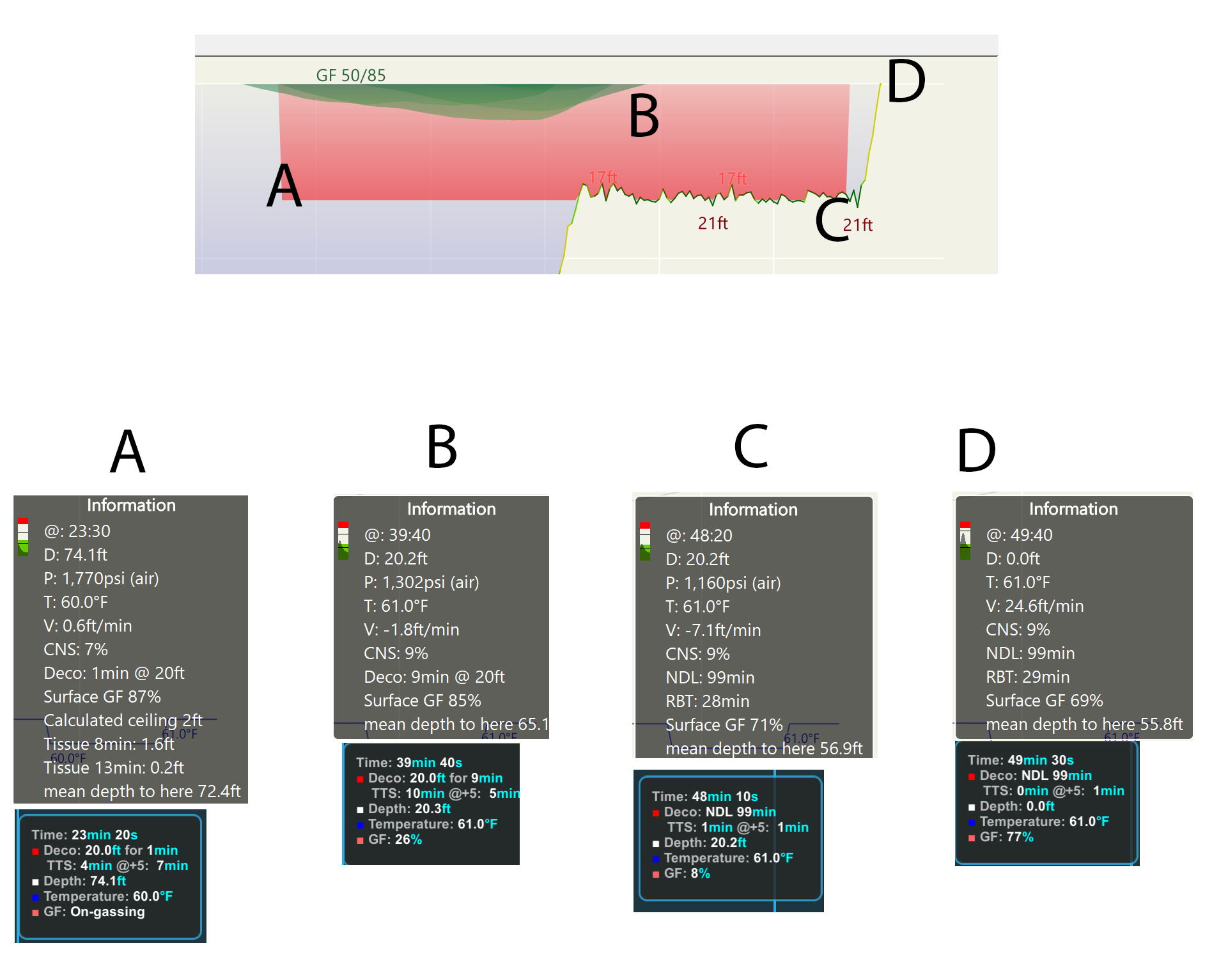Going back to the original post, I started to look at one of my dives in Shearwater Desktop Cloud and noticed that the surfacing GF99 was 77%, which is strange since my gradient factors in my Perdix AI are set to 50/85 and I did not pad the stop. I also imported the dive into Subsurface to get a second opinion.
For those not familiar with Subsurface, the green is the calculated ceiling by Subsurface while the red is the ceiling from the computer. The red in Subsurface matches what is displayed in Shearwater Cloud Desktop.
I have labeled some points on the dive profile and gotten the info from both Subsurface and Shearwater Cloud Desktop. Note that SurfGF comes from Subsurface while GF99 Shearwater.
The values of A and B make sense to me – beginning and end of deco obligations would mean that the SurfGF ~= GFHi (as said in the OP). However, I do not understand C or D.
- Why did Perdix have a deco obligation end at C /SurfGF(71) instead of B/SurfGF(85)?
- Why are Subsurface and Shearwater GFs so different upon surfacing (69% vs 77%)?
Maybe I am misinterpreting or not understanding what I am really looking at, but any insight would be appreciated
For those not familiar with Subsurface, the green is the calculated ceiling by Subsurface while the red is the ceiling from the computer. The red in Subsurface matches what is displayed in Shearwater Cloud Desktop.
I have labeled some points on the dive profile and gotten the info from both Subsurface and Shearwater Cloud Desktop. Note that SurfGF comes from Subsurface while GF99 Shearwater.
A: Start of deco obligation. SurfGF(87), GF99(On-Gassing)
B: End of Ceiling from Subsurface. SurfGF(85), GF99(26)
C: End of Ceiling from Sheatwater: SurfGF(71), GF99(8)
D: Surface. SurfGF(69), GF99(77)
The values of A and B make sense to me – beginning and end of deco obligations would mean that the SurfGF ~= GFHi (as said in the OP). However, I do not understand C or D.
- Why did Perdix have a deco obligation end at C /SurfGF(71) instead of B/SurfGF(85)?
- Why are Subsurface and Shearwater GFs so different upon surfacing (69% vs 77%)?
Maybe I am misinterpreting or not understanding what I am really looking at, but any insight would be appreciated





